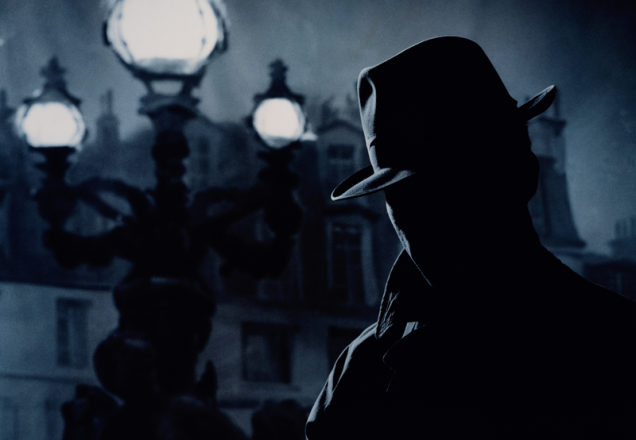John Le Carré does not use his real name: he’s actually called David Cornwell. A lot of writers have false identities, of course – Mark Twain was actually Samuel Langhorne Clemens – but the choice may have come more naturally to Le Carré, because he used to be a spy.
Writing and espionage have a surprising amount in common: writers infiltrate, they gather intelligence, they report. Many writers have also been spies – Graham Greene and Somerset Maugham, to name two of the most famous. Here in France, Gérard de Villiers – the father of SAS – befriended at least a few real life spies for research purposes.
As you’ve gathered, espionage has been on my mind lately. That’s partly because I’m reading Le Carré’s autobiography, The Pigeon Tunnel. But I’m also following the Russian hacking scandal and I’m deep into the second season of Le Bureau des légendes.
Which is how I began making connections between spying and branding. In the spy game, a “legend” is a fake identity, a collection of stories you tell about yourself to construct a personality. Just as novelists do when they create characters – and marketing professionals do when they build a brand. In fact, when novelists choose a pen name they also, to an extent, choose a brand name. As I know only too well, writing is book is only half the job; you’re also expected to promote it.
Another recent experience made me draw a further comparison between espionage and advertising. I paid a visit to the Paris offices of Radium One to learn how programmatic advertising – or “data-driven marketing”, as they call it – really works. As you may have learned from a recent issue of Stratégies, it partly involves tracking our digital avatar as we move around the web. Radium One also has a tool that maps our internet profile and tries to find look-alikes. Because, if we are regular purchasers of certain products and services, our digital doppelgangers are potential customers for those brands too.
Facebook and Google, intelligence agencies?
My hair practically stood on end when I heard this, because it was almost exactly the way the spies of Le Bureau des légendes identify terrorist suspects – by comparing patterns of mobile phone usage and digital behaviour. The anxiety among the general public about privacy and the use of data is partly driven by the discomfiting feeling that Facebook and Google are behaving like intelligence agencies. Or is it the other way around? Who is looking over our shoulder? Social networks? Brands? The government? Or are they all working in collusion?
Of course, the thought that an advertising professional could double as a spy is sheer fantasy, worthy of a Le Carré novel. Right? But wait a moment – what’s this footnote we stumble across in the biography of one David Ogilvy?
In the early 1940s Ogilvy was working for the intelligence service at the British embassy in Washington, using his research skills to identify citizens who might be collaborating with the enemy. And where did he hone those talents? At George Gallup’s Audience Research Institute, the pre-war equivalent of Radium One.
Somewhat more outlandishly, Ogilvy is also said to have spent time in Canada at a “spy school” called Camp X, the subject of a Canadian TV series last year. It was supposedly here that he mastered the art of propaganda.
By the time he started his agency in New York after the war, Ogilvy was a skilled fabricator. His own image was, to some extent, a cover story. With his pipe and his well-cut suits, he exaggerated his Britishness. As he told Viewpoint magazine many years later: “With so many agencies, so much competition, I’d got a gimmick – my English accent, which helped to differentiate me from the ordinary.”
Willingness to do painstaking research
This was branding by personality – a technique Ogilvy used again and again, most famously in the creation of “the man in the Hathaway shirt”. The rakish, silver-haired dandy in an eye patch appeared in a series of popular ads for Hathaway, a brand of inexpensive shirts. We’d see the character sailing, fencing or designing his own plane. Men knew they could not be him, so instead they bought his shirts. In fact he was a rather ordinary model named George Wrangell – but Ogilvy turned him into a legend.
In fact, the attributes that made Ogilvy the perfect ad man would have also made him the perfect spy: the willingness to do painstaking research – to gather intelligence – and the ability to tell highly persuasive lies.
So that’s the hidden connection between David Ogilvy and David Cornwell. Researchers, storytellers and brand creators, Ogilvy and “John Le Carré” combine three disparate but strangely linked worlds.




